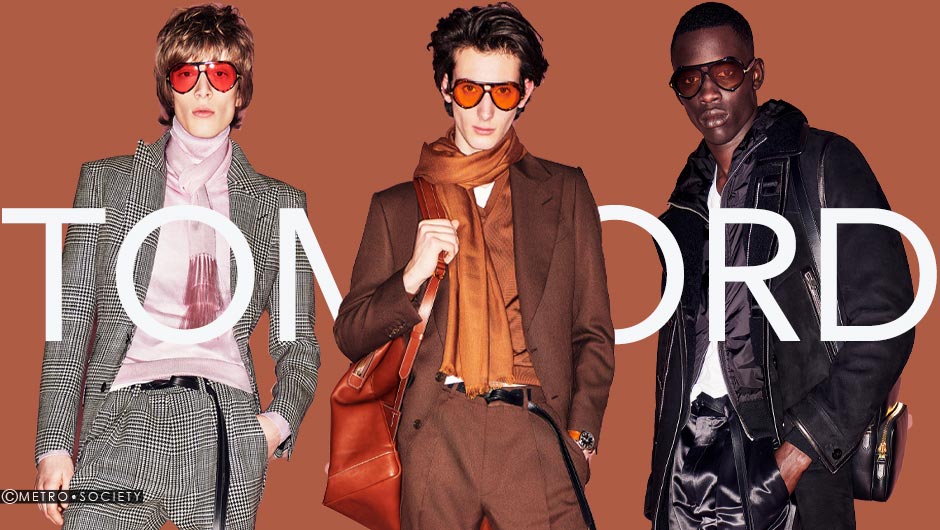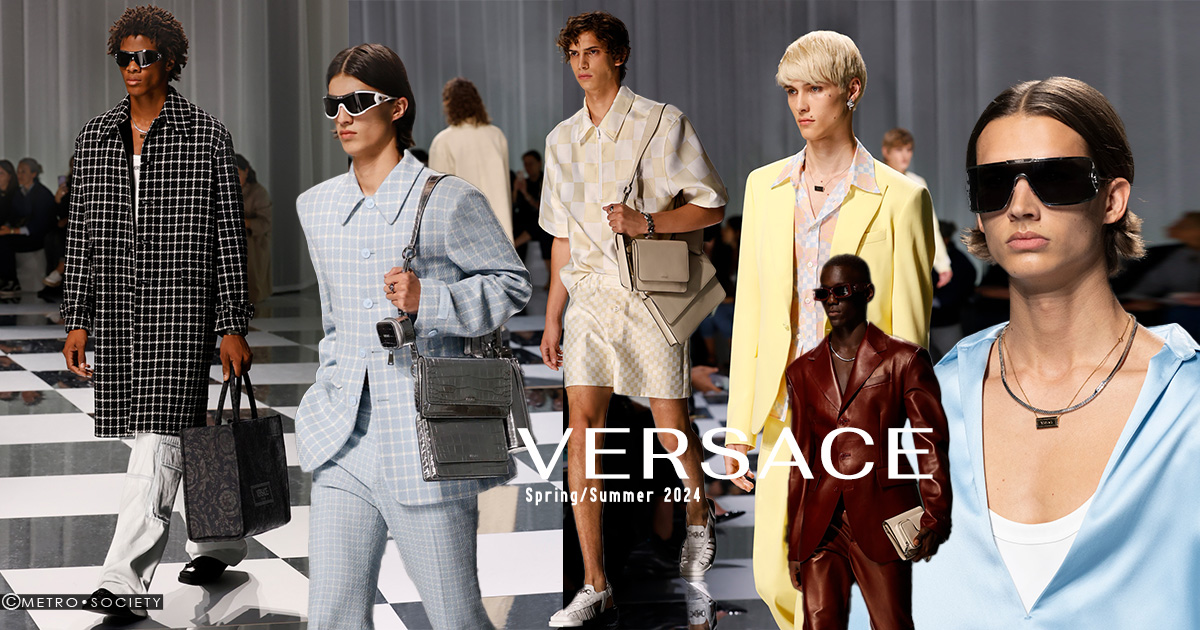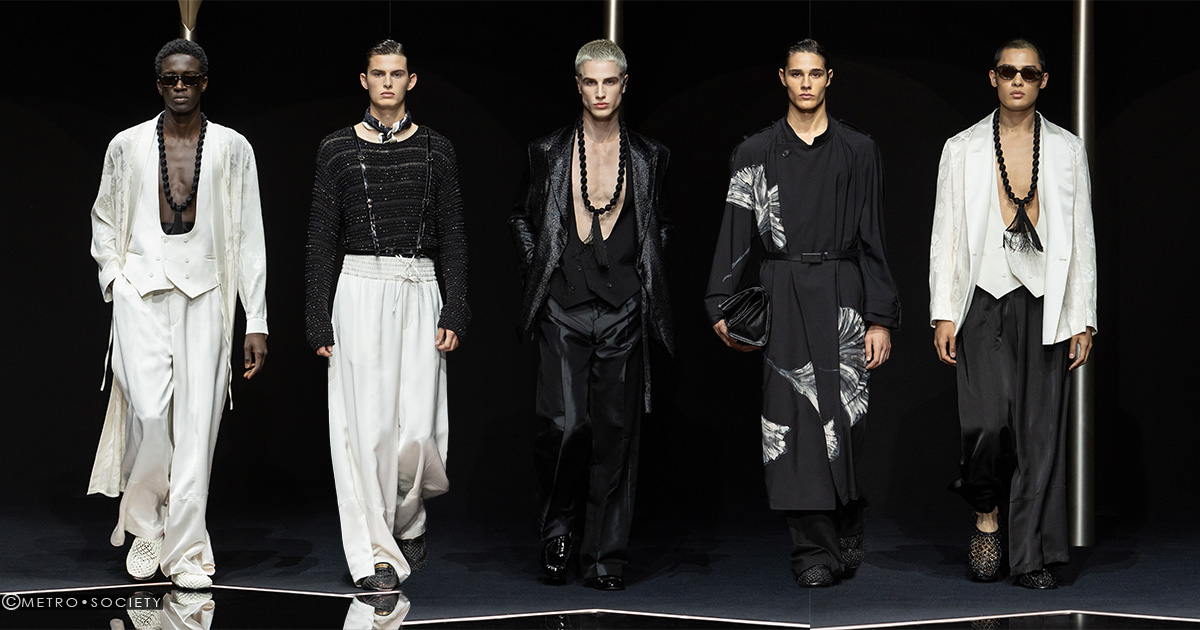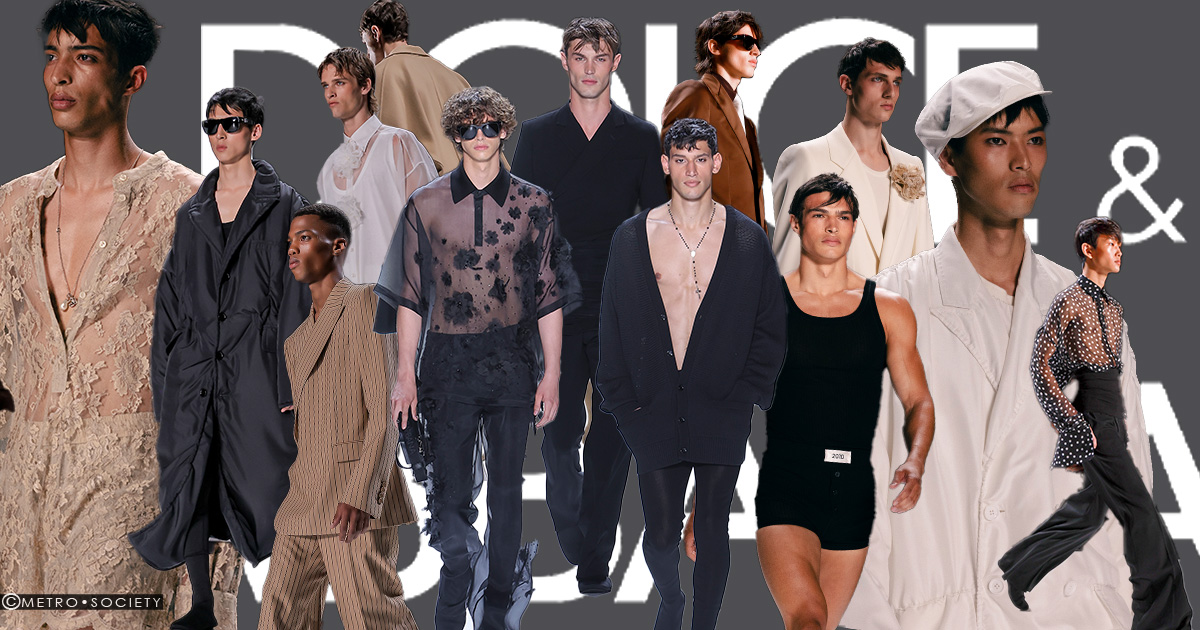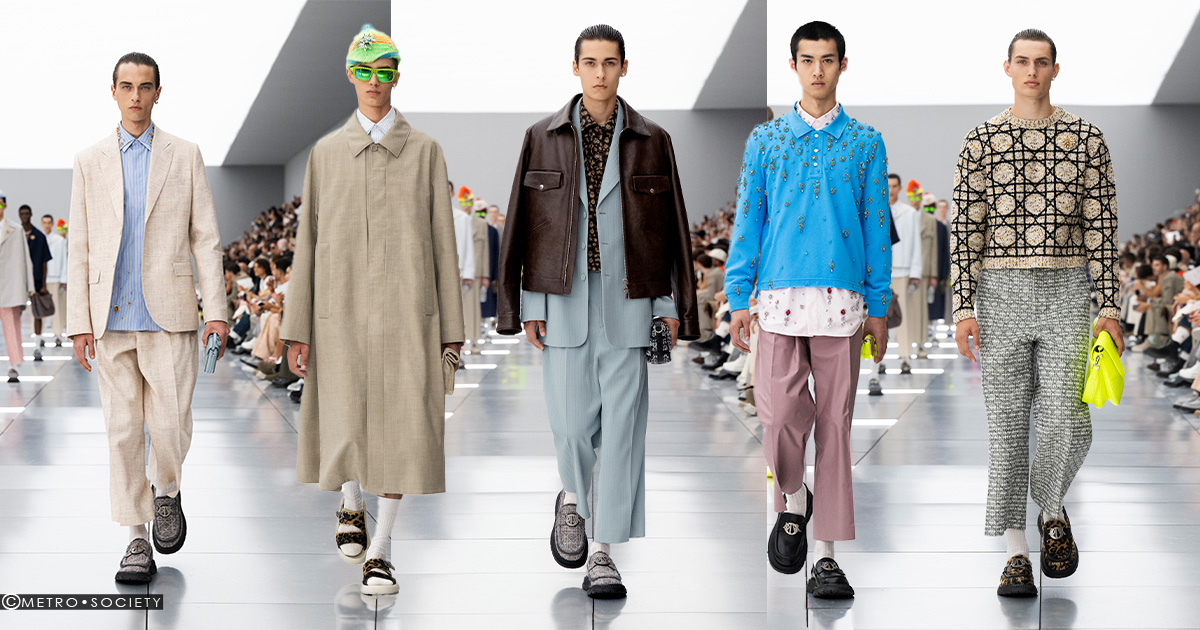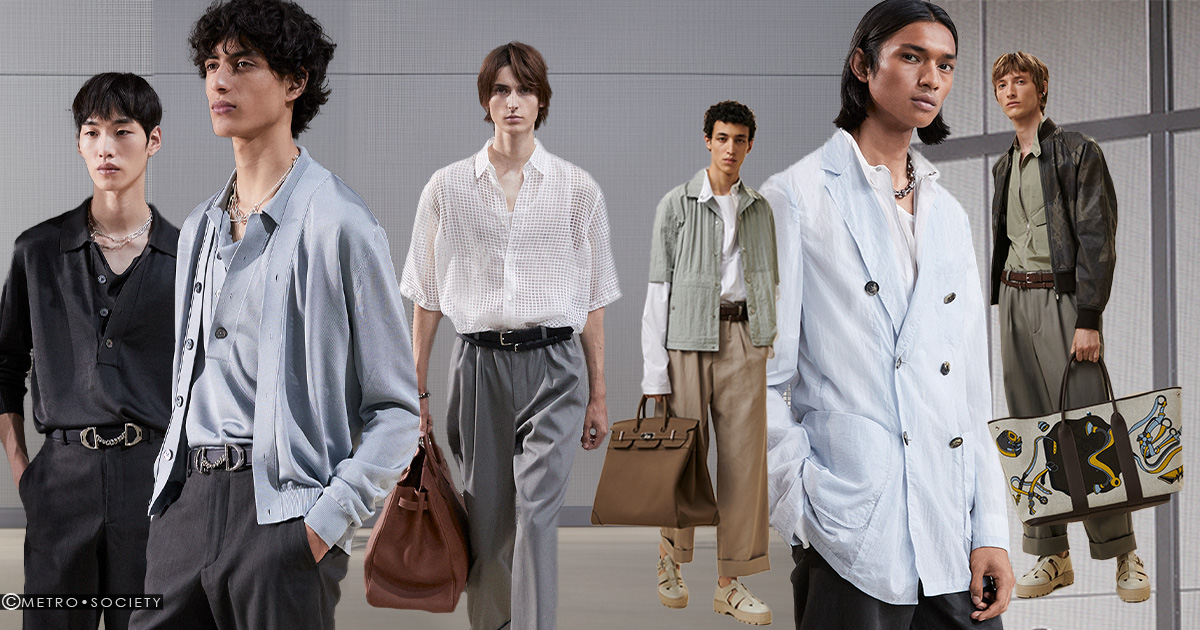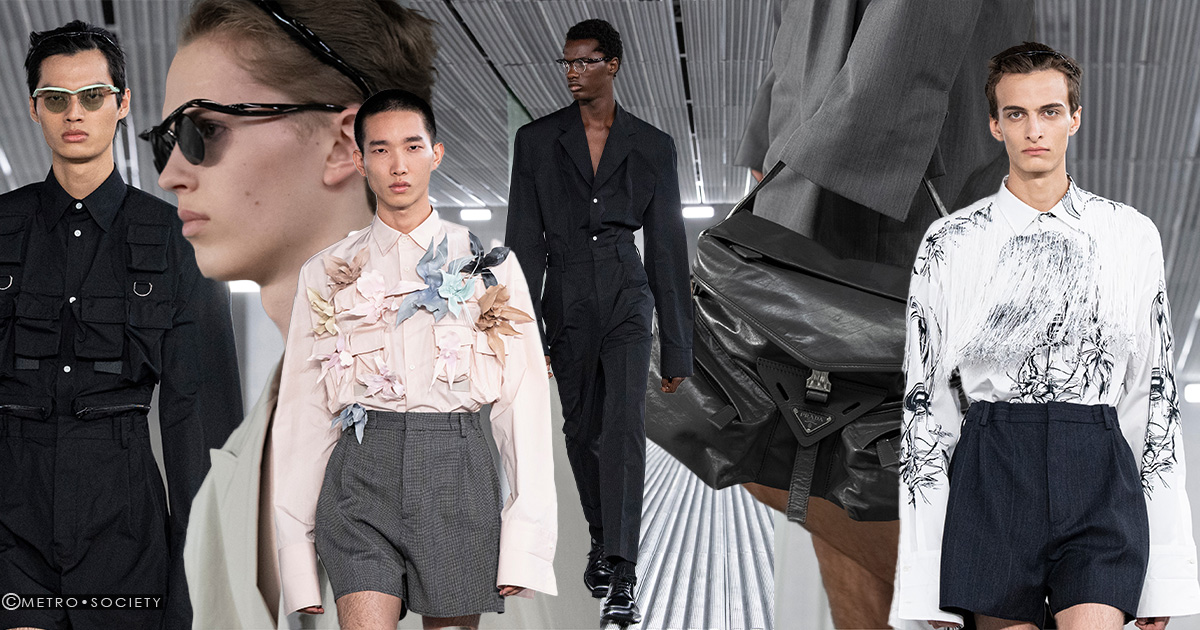TOM FORD #AW20
• Autumn/Winter 2020
- July 14, 2020
-
 7,333
7,333
Each season our PR department begs me for show notes. I don’t love doing them as I always find it dull to just create a laundry list of silhouettes, colors, fabrics and other details that make up a collection because although these things are important they are not the things that actually give a collection meaning.
The important thing for me has always been the “attitude” of a season. The “mood" and the “character" of the man or woman that defines that moment in time.This season there was one photograph which was the first to make it onto my inspiration wall and unusually, it was also the last to remain and the image that I referred to as I was putting the final looks together for the show.
The picture is one of my favorites and was taken by Bob Richardson in 1966 for French Vogue and is of Baron Alexis De Waldner and Donna Mitchell. Alexis is holding a cigarette [or a joint] up to Donna’s mouth and her eyes are closed in a relaxed and sensual way. I love this image and it’s slightly louche mood. Chic, possibly slightly stoned, and very sensual. Bob lived in LA for part of this period of his life and while I am not sure where the image was actually taken, for me it conveys the mood of the season and a mood that for me is very LA.
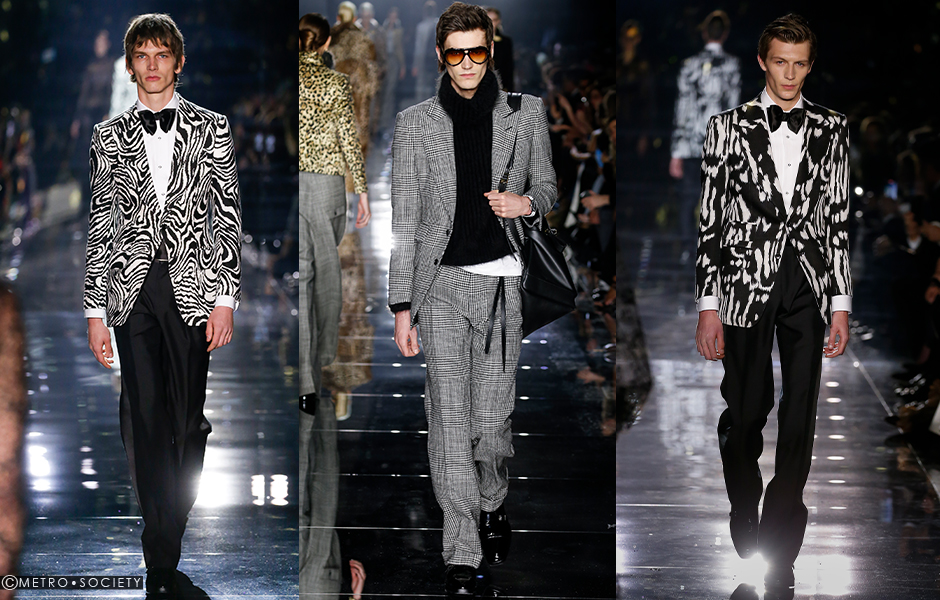 Photo: Courtesy of TOM FORD
Photo: Courtesy of TOM FORD
As a fashion designer, one is only able to present to the world one’s true and deepest ideals of beauty once. Only once. If you are lucky, the world responds. I did that in the mid 1990’s with my work at Gucci and since then I have been refining that ideal of beauty season after season and altering it for the times in which we live. Designers that are successful know themselves well on some level, whether consciously or subconsciously, and have a set of core beauty standards and values that are always present in their work.
I have learned over the years that one cannot fake one's aesthetic simply to adapt to a current trend, but that one must bend their aesthetic towards the times. Authenticity and having a clear message about what one represents has never been more important than it is today.
This can be hard to maintain as the decades pass but it is the key to remaining relevant, even if there are some seasons [or years] where the kind of clothes that one prefers are not in vogue. A designer's work must also reflect where they are in their own lives. Sometimes my work has been overtly sexual which I felt was right for the times. Sometimes it has been less so.
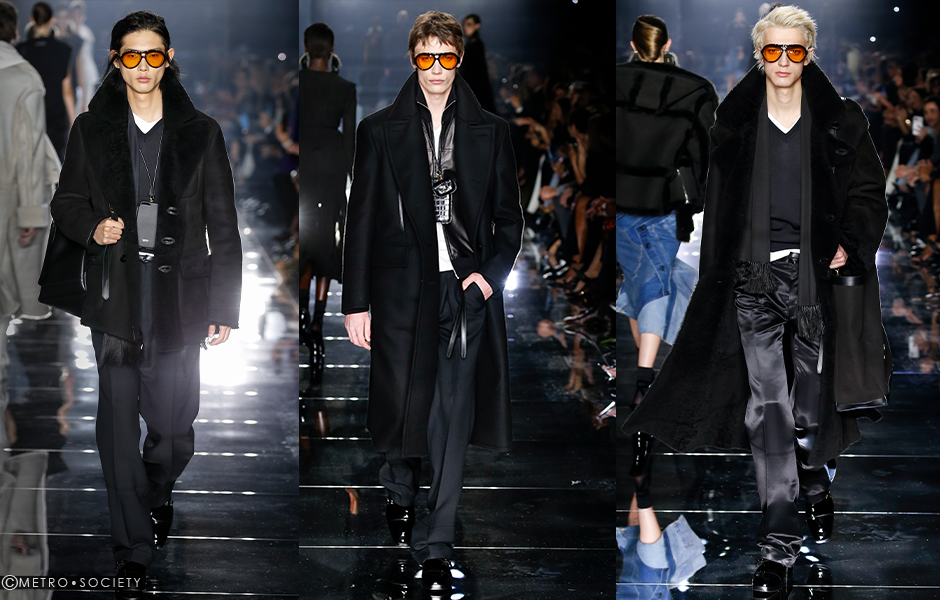 Photo: Courtesy of TOM FORD
Photo: Courtesy of TOM FORD
Today I find my work to be more sensual than sexual, which is a reaction to the climate of our time and also perhaps a reaction to my age. While jacket shoulders widen and narrow, and heels vacillate from year to year between stilettos and platforms, the core ethos of my work has never wavered and that is to make both men and women the most beautiful versions of themselves possible. I have often been asked why I am always designing clothes that make people “sexy", the truth is that I don’t actually start out with that as my goal when designing, but I
find the human body beautiful and I naturally and without thinking, tend to cut clothes that accentuate and enhance it's form and thus my clothes are by nature sensual. And at times sexual. At least I hope that they are.
A designer’s sense of beauty is, I believe, heavily influenced by the time in which they came of age. There will always be a trace of the 1970’s in my work, as there is this season. Sometimes it is indeed just a trace and other years it is more of a full blown homage. A kind of luxe and sensual minimalism. I think that all designers are impacted in this way whether they realize it or not. The moment when one first sees a man or woman that takes one’s breath away, or is stunned by a beautiful car or a spectacular room, forms the basis of our tastes and stays with us forever.
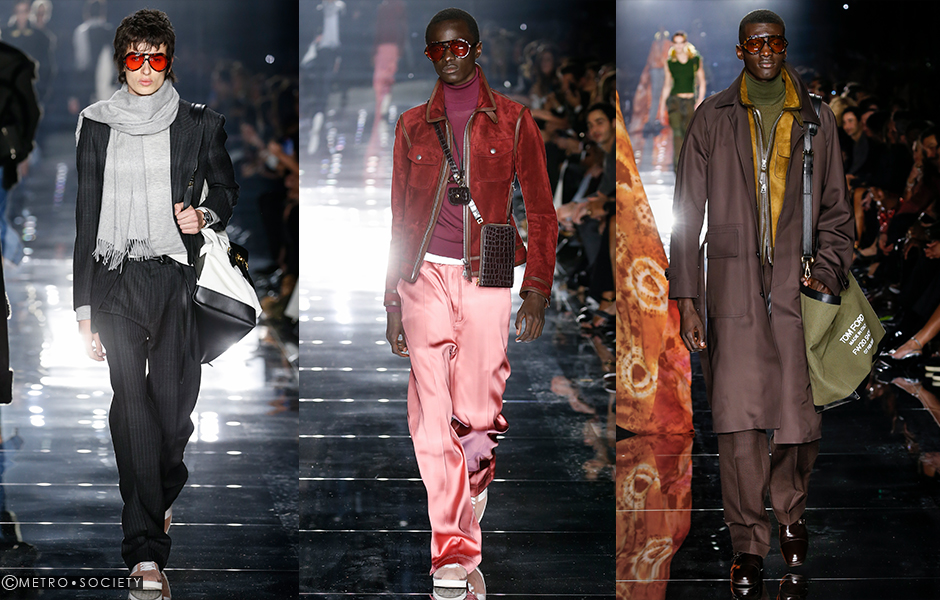 Photo: Courtesy of TOM FORD
Photo: Courtesy of TOM FORD
For me these moments happened in the 1970’s. For the designers a decade younger than I am, it was the 80’s and for many of my design assistants today it was the 1990’s, which were of course very much about the 70’s, which were in turn very much about the 40’s. Things are constantly recycled but are seen in a fresh way through the eyes of the next generation, which makes them different and causes fashion to evolve.
The designers that I grew up admiring had grown up in the 1940’s and hence the 40’s style of that period became the basis for much of the aesthetics of the early 1970’s, as those designers reworked the period of time in which they were first impacted by beauty. As my friend Karl Lagerfeld so rightly said “fashion is like music in that the notes are always the same, but like music it is the arrangement that changes”.
So, here are the fashion messages of the season. The “laundry list” of silhouettes so to speak. Extravagant pieces are treated in a more casual way, often paired with sweatshirts or tee shirts. Pants are wider and softer, heels are thicker and sculpted, and platforms look great even on men and help to create a longer and leaner silhouette.
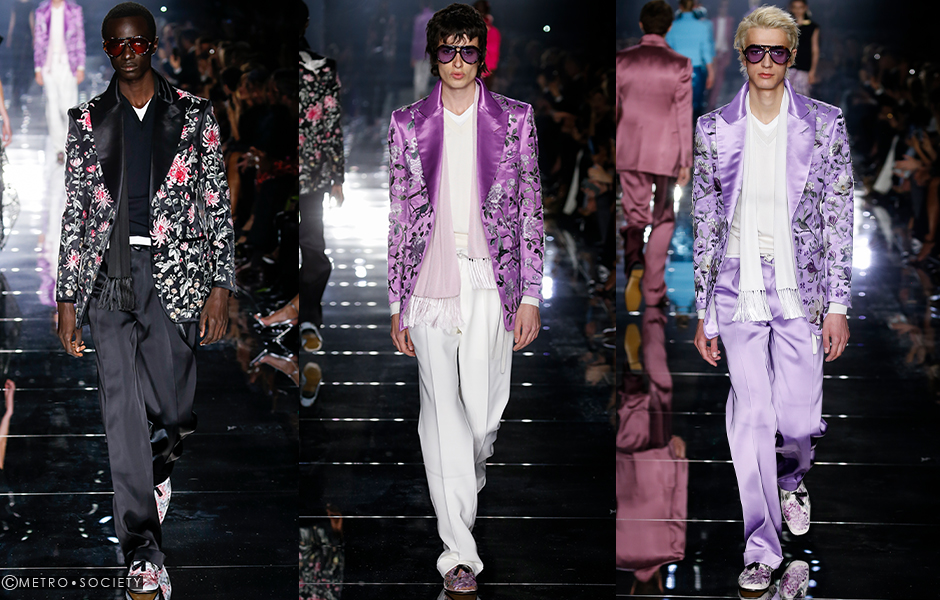 Photo: Courtesy of TOM FORD
Photo: Courtesy of TOM FORD
Jackets are smaller, and almost shrunken but coats are bigger and longer. Everything is a play in volume. Denim is distressed, cut apart and reassembled, and worn as fashion pieces and not just as “jeans”. Re-assembled military looks in khaki and loden as well as cut up traditional fabrics like Prince of Wales plaids, are used for tailored jackets, skirts and pants. Hemlines are longer but uneven.
Track pants and trainers modernize classic men’s looks and are of course mainstays in the wardrobes of today. The look is chic but effortless. But the important thing is the attitude: a relaxed, sensual and somewhat louche kind of luxury that must be worn in a way that never, ever looks like you are trying to hard.
Evening for me however remains classic and pure. I love designing evening clothes. I have more evening clothes in my own closet than day clothes. I am a classicist at heart and for me “Black Tie" means “Black Tie” not “Festive Black Tie” or “Creative Black Tie” or “Black Tie Optional” but proper “Black Tie”. No tricks but just beautiful evening clothes, and perhaps I am feeling particularly romantic this season as for the first time I am ending a show with a bride. Fresh and hopeful. And hope is something I think that we all need right now.
- Tom Ford









